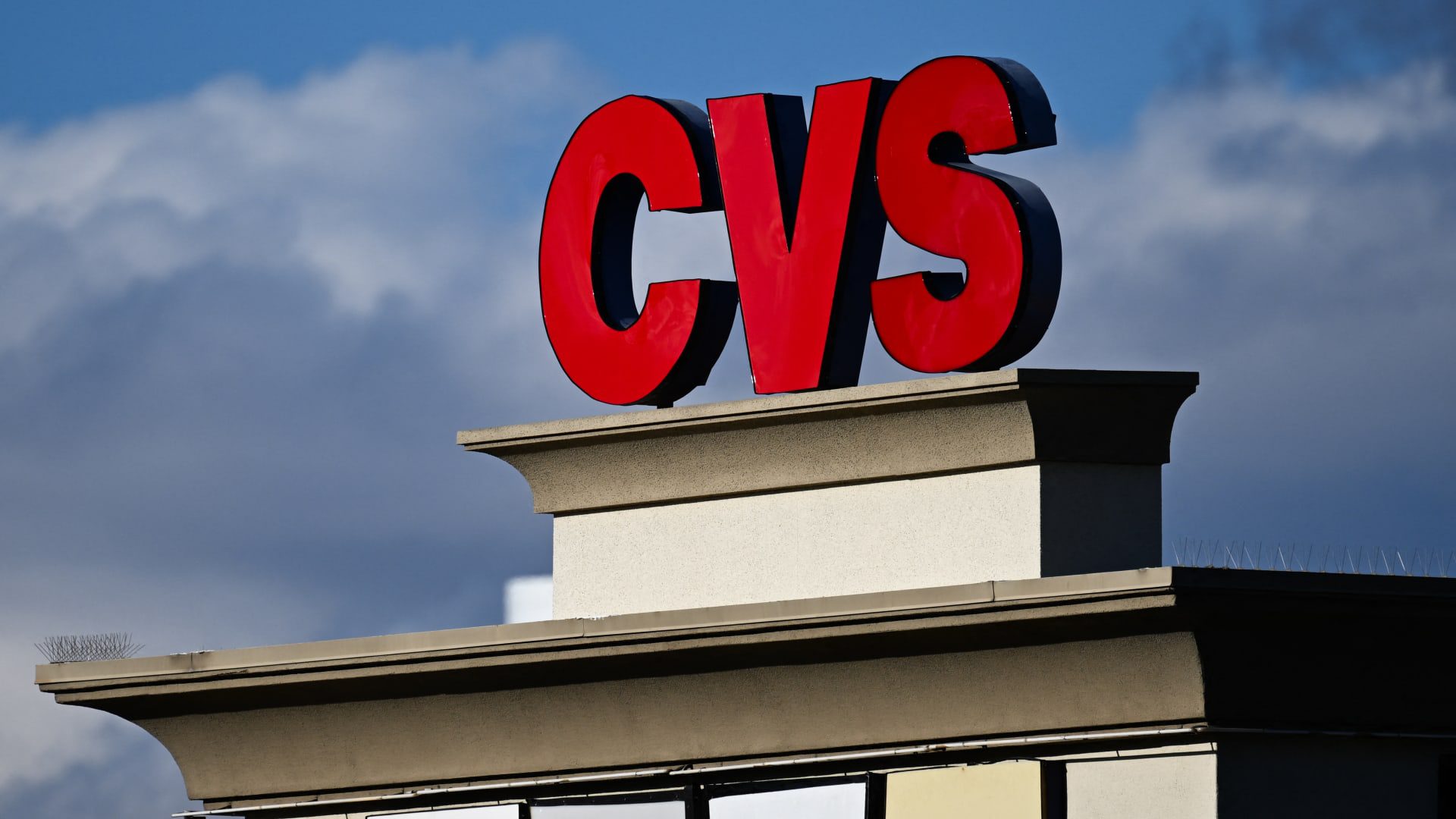
CVS Health Shows Signs of Recovery After Challenging Year
On February 7, 2024, the CVS Health logo was prominently displayed at a store in Las Vegas, Nevada. Following a lackluster performance in 2024, CVS Health appears to be on the path to recovery.
Investors are showing renewed interest, especially after the retail pharmacy giant reported impressive fourth-quarter earnings and provided a profit outlook for 2025 that aligns with market expectations. As a result, CVS’s stock has risen over 45% this year, contrasting sharply with its main competitor, Walgreens, whose stock has only increased by around 3%. Other health insurers, including UnitedHealth Group and Cigna, saw their stocks rise by approximately 4% and nearly 8%, respectively.
These optimistic quarterly results may suggest that CVS is beginning to emerge from a difficult period and could indicate a more promising future. The company’s stock had plummeted by more than 40% in 2024 after failing to meet earnings estimates for three consecutive quarters and retracting its annual forecast. This decline was significantly influenced by unforeseen medical costs in its insurance segment and challenges such as pressure on pharmacy reimbursements.
While CVS is not completely out of the woods, the less severe medical costs reported during the fourth quarter give hope for stabilization in 2025. As the demand for healthcare services grows, particularly among seniors, medical costs are likely to remain elevated.
Some analysts express optimism about CVS’s capacity to navigate these remaining hurdles while aiming for its full-year 2025 adjusted earnings guidance of $5.75 to $6 per share. The company has been enacting cost reduction strategies, including store closures, and CEO David Joyner has focused much of his initial tenure on improving the company’s insurance division, Aetna.
Michael Cherny, an analyst from Leerink Partners, noted that CVS seems poised to recover from its recent operational challenges, and Cantor Fitzgerald analysts echoed this optimism, upgrading CVS’s stock due to increased confidence in a successful turnaround.
Challenges in the Insurance Sector
CVS has initiated several measures to streamline its insurance operations, targeting its plans for the Affordable Care Act, Medicare Advantage, and Medicaid. The company exited certain less profitable health plans last year and opted to raise premiums to limit enrollment this year.
Cantor Fitzgerald analysts now feel more confident about CVS’s potential to enhance its margins in the Medicare Advantage sector, forecasting a return to "normal levels" by 2027. CVS aims to shift its Medicare Advantage margins back to the desired range of 3% to 5%, having ended 2024 in the negative margin territory.
Similar to other insurers such as UnitedHealth Group and Humana, CVS experienced rising medical costs last year as hospital visits increased among Medicare Advantage patients who had postponed care during the pandemic. Medicare Advantage, a privately managed insurance plan under Medicare, has historically driven growth for insurers. However, investors have been wary due to spiraling expenses associated with these plans.
To improve profit margins, CVS plans to reduce its Medicare Advantage membership by a "high single-digit percentage" by the end of 2024. Aetna’s membership grew to 4.4 million by December, up from 3.5 million a year prior. Overall, CVS anticipates decreasing its insurance memberships by over one million this year, including a significant reduction in the individual market.
Aetna’s improved Medicare Advantage star ratings for 2025 are expected to enhance its federal reimbursements in 2026. These ratings play a crucial role in helping patients assess Medicare health and drug plans and determine bonus payments from the Centers for Medicare & Medicaid Services.
On the recent earnings call, Joyner emphasized the company’s push for increased reimbursement rates from the federal government for Medicare Advantage, highlighting that proposed rates for 2026 do not adequately reflect last year’s rising medical costs. The Biden administration has suggested a 2.2% increase in rates for 2026, compared to a 0.2% reduction this year. Cantor Fitzgerald analysts also project a finalized increase of 2% to 2.8%.
Although predicting medical cost trends for 2025 remains challenging, CVS has factored higher anticipated costs into its full-year projections. Tanquilut noted early signs of improvement for 2025 but emphasized that expectations are still cautious.
In 2023, CVS announced plans to implement significant adjustments to its Medicare Advantage offerings for 2025, including higher copays and premiums, alongside the elimination of certain health benefits. These changes aim to reduce associated expenses but may also result in patient attrition.
Competitors like Humana are adopting similar strategies, cutting back on Medicare Advantage plans to alleviate costs. Humana is set to drop 550,000 members in lower-profit markets, but it reassures that similar plan options will be available for those affected.
CVS Stock Outshines Competitors
CVS’s stock performance has outpaced many of its healthcare competitors in both the insurance and retail pharmacy sectors. Jefferies analyst Brian Tanquilut attributes this success to CVS’s integrated business model, which encompasses a health insurer, a retail drugstore chain, and a pharmacy benefit manager (PBM), Caremark.
Tanquilut noted that CVS is demonstrating the advantages of owning all three segments. PBMs like Caremark are crucial players in the U.S. drug supply chain, negotiating rebates with manufacturers for insurers, establishing preferred medication lists, and reimbursing pharmacies for prescriptions.
This integrated approach allows Caremark to streamline operations between CVS’s retail outlets and Aetna, giving both sectors a competitive edge. Notably, Caremark sometimes directs prescriptions to CVS pharmacies, enabling CVS to gain significant market share over rivals such as Walgreens, which operates independently.
While other insurers also maintain PBMs, CVS’s ownership of a retail pharmacy differentiates it in the marketplace. Despite these challenges, Tanquilut emphasizes that UnitedHealthcare remains a leading player in the insurance industry.
CVS’s situation is more complex than its counterparts due to its multifaceted business model, but it may be reaching a pivotal moment where all three divisions start to align successfully.









